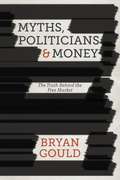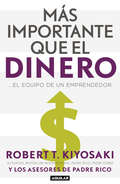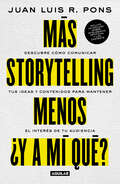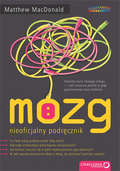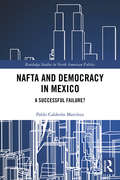- Table View
- List View
Myths, Politicians and Money
by Bryan GouldRIPPING THE LID OFF THE MYTH OF THE FREE MARKET 'TRIUMPH' Many of us are increasingly puzzled and angered by the problems that government seems unable to resolve. Recent revelations by whistle-blowers only add to the sense that powerful forces control our lives and that we have no say in what they decide. There is, in general, a distinct loss in confidence in the democratic process. In MYTHS, POLITICIANS & MONEY, former Shadow Chief Secretary to the Treasury Bryan Gould casts new light on these issues. Using examples of his involvement with many of the pressing political and economic issues that have troubled governments in the West over the last four decades, Gould shows that these problems have a common cause: the surrender of our democracy to those who control and dominate the global economy. MYTHS, POLITICIANS & MONEY exposes why politicians around the world distort economic policy against the interest of ordinary people, how neo-liberalism has been allowed to rise to prominence and why the break-down of a European super-state will create economic stability for millions. Controversial and shocking, this is the insider story of the rise of the free market ideology, its entrenchment within politics and the terrible impact that it has had on society.
Mytrah Energy
by Tarun Khanna Rachna Tahilyani Ramana NandaMytrah Energy by Tarun Khanna, Ramana Nanda, and Rachna Tahilyani
Mytrah Energy
by Tarun Khanna Rachna Tahilyani Ramana NandaMytrah Energy by Tarun Khanna, Ramana Nanda, and Rachna Tahilyani
Más allá del liberalismo y el populismo: Una síntesis desarrollista para la Argentina
by Federico PoliPasado, presente y futuro de la Argentina desde una perspectiva de síntesis desarrollista, que propone dejar atrás las posiciones populistas y liberales-ortodoxas que han sido dos caras de la misma moneda de fracaso y frustración, y recuperar el camino al bienestar. El balance de las últimas tres décadas de política económica argentina que Federico Poli presenta en este libro se beneficia de su dilatada trayectoria profesional en nuestro país y en organismos internacionales y de sus intervenciones en la esfera pública con las que, en la forma de artículos periodísticos, fue dando testimonio durante esos años. Todo lo que aquí hay de diagnóstico es insumo de una potente plataforma de lanzamiento de propuestas para nuestros presente y futuro. En el mismo gesto en que Poli impugna a populistas obsesionados por la redistribución de lo inexistente y a liberales fijados en la estrechez de lo monetario por haber contribuido a la destrucción del proceso inversor, señala el peor olvido de la dirigencia argentina: la generación de riqueza, núcleo del fracaso colectivo de último medio siglo. Agotadas las dos caras de una misma y ruinosa moneda, en estas páginas se demuestra que los activos productivos de lo que supimos hacer todavía están ahí; en eso, y en su formulación de una síntesis desarrollista que devuelva bienestar a la Argentina, se cifra la visión esperanzada que propone y a la que convoca.
Más allá del sí: Un método para superar el autosabotaje y negociar con éxito
by Erica Ariel FoxNegociar con eficacia es crucial para dirigir con inteligencia y ser feliz. Cómo dejar de ser su propio peor enemigo en las negociaciones y en la vida. Liderar y vivir implica estar negociando continuamente y emplear una estrategia con la que ambas partes salgan ganando. Sin embargo, tradicionalmente hemos soslayado el hecho de que las negociaciones que más impacto tienen en nuestra capacidad de liderar son las que mantenemos con nosotros mismos. ¿Qué significa «negociar con uno mismo»? Es lo que ocurre cuando usted quiere seguir trabajando pero al mismo tiempo desearía cumplir su promesa de cenar con la familia; o cuando una parte de usted quiere darle una nueva oportunidad a una relación, mientras la otra sabe a ciencia cierta que ha llegado el momento de decir adiós. Más allá del sí le ofrece una hoja de ruta para negociar con usted mismo, echar mano de la sabiduría innata que reside en su interior y aclarar sus ideas. Tanto si tiene problemas con un cliente complicado como si ha surgido una pequeña discrepancia con su cónyuge, cuando comprenda y domine lo que Erica Ariel Fox llama sus «negociadores internos», será capaz de superar rupturas y llegar a acuerdos, controlando a su peor enemigo: usted mismo Reseñas:«Erica Ariel Fox ha creado unas herramientas imaginativas y novedosas para ayudarle a controlar su mundo interior. Más allá del sí es la llave para una vida mejor.»Daniel Goleman, autor del best seller Inteligencia emocional «Erica Ariel Fox ha conseguido integrar de forma innovadora el cambio personal con herramientas prácticas para liderar y negociar. Su nuevo método tendrá un impacto tanto en el trabajo como en casa.»Deepak Chopra, autor de El alma del liderazgo «Sencillamente, Erica es una de las mejores maestras de liderazgo de nuestros tiempos. Su libro le cambiará la vida, como cambió la mía.»Nate Boaz, socio de McKinsey & Company
Más amistades y menos likes
by Ferran Ramón-CortesInmersos en las redes sociales, estamos más conectados que nunca a muchas personas y más desconectados que nunca de todas. Es hora de recuperar el control sobre nuestras relaciones y de ordenarlas para cuidar las que de verdad nos importan y deshacernos de las que nos sobran. Está en juego nuestra felicidad porque las relaciones personales hacen que seamos más o menos felices. Somos la generación de las redes sociales y nos relacionamos con más personas que nunca, aunque pagamos un precio muy alto por ello. Comenzamos respondiendo wasaps mientras cenamos con los amigos o aplazando indefinidamente encuentros y salidas con personas a las que queremos, y acabamos secuestrados por contactos inútiles, e-mails y mensajes de todo tipo y estilo. En el mejor de los casos, nos sentimos desbordados. En el peor, no tenemos tiempo para cuidar aquellas relaciones que más nos importan. Por eso ha llegado el momento de recuperar el control sobre nuestras relaciones y de ordenarlas para preservar y cuidar las más valiosas. Y para ello tendremos que asumir que no podemos llevarnos bien con todo el mundo ni mantener una relación intensa con muchas personas a la vez, y aceptar que las relaciones a veces se desgastan, mueren o, en ocasiones, renacen. Y debemos ponernos manos a la obra de inmediato porque, aunque ya sabemos que ni el éxito ni el dinero garantizan la felicidad, sí se ha demostrado que las relaciones personales hacen que unas personas sean más felices que otras.
Más de 100 Consejos para Mejorar Tu Vida Profesional: Ética Profesional
by Richard G Lowe Jr Aurora CarranzaDispara Tu Carrera Sin Sacrificar Tu Ética e Integridad ¿Qué si pudieras ser extremadamente exitoso en tu carrera? Imagina que pudieras hacer unos simples pasos para en verdad comenzar a disfrutar tu trabajo, llegar a casa relajado e incrementar tu paga. ¿Qué si pudieras hacer todo eso sin hacerle favores al jefe o sacrificar tu integridad y vida personal? El Líder corporativo y gerente por más de 30 años, Richard Lowe, presenta algunas de las lecciones que él ha aprendido gestionando cientos de personas y dirigiendo a exitosos y felices equipos. Lowe responde la pregunta: ¿Cómo puedes mejorar tu trabajo, realzar tu carrera, hacer más dinero y aún así tener una vida feliz afuera del trabajo? En este libro aprenderás: Cómo obtener el respeto de tus compañeros de equipo Qué se necesita para ser visto como un líder efectivo Cómo manejar a las manzanas podridas del área de trabajo Por qué las juntas son estúpidas a menos de que sean cuidadosamente controladas Qué hacer sobre el agujero negro de los correos electrónicos que hacen perder tiempo Por qué los gerentes aman los plazos y cómo controlarlos Por qué tu integridad es la comodidad más importante que posees Cómo mantener separada tu vida laboral de tu vida personal, aún si el jefe quiere que trabajes hasta la muerte Escucha cómo incrementar tu productividad, mejorar tu carrera, ¡y ganar más dinero!
Más importante que el dinero: ...El equipo de un emprendedor
by Robert T. KiyosakiDeporte de equipo. ¿Quién está en tu equipo? Aprende cómo construir tu equipo ganador con Robert, Kim y sus asesores más confiables. Muchas personas tienen ideas millonarias. Confían en que su nuevo producto, servicio o innovación los hará ricos. ¿El problema? Muchas personas no saben cómo convertir su idea millonaria en millones de dólares. Conoce a los Asesores de Padre Rico de Robert y Kim... y aprende por qué están entre sus activos más valiosos: -Ken McElroy: Asesor en Bienes Raíces, Deuda y Recaudación de Capital -Blair Singer: Asesor en Ventas y Formación de Equipos -Garrett Sutton, Esq: Asesor en Protección Patrimonial y Planes de Negocios -Tom Wheelwright: CPA Asesor en Impuestos y Estrategias de Riqueza -Andy Tanner: Asesor en Activos de Papel -Josh y Lisa Lannon: Asesores en Emprendimiento Social
Más storytelling, menos ¿y a mi qué?: Descubre como comunicar tus ideas y contenidos para mantener el interés de tu audiencia
by Juan Luis R. Ponscomunicarte de forma clara y efectiva es más crucial que nunca Te ha pasado que alguien te cuenta algo y que lo único que te viene a la cabeza es: “¿Y A MÍ QUÉ?”. Bueno, no permitas que le suceda así a tu audiencia cuando comuniques tus ideas o contenidos. Lo que tú quieres es conectar a nivel emocional, que lo que digasles importe y que mantenga su atención. ¿Cuál es el secreto? Entender qué es ESO que responderá al “¿Y A MÍ QUÉ?” de la gente que te escucha. Los principios que encierra esta poderosa frase son la clave para no solo contar historias, sino enamorar a tu audiencia con ellas. Este libro te dará la confianza para estructurar y comunicar tus ideas y contenidos de forma clara, efectiva y memorable. Aprenderás cómo llevar tu storytelling al siguiente nivel, para que tus ideas impacten emocionalmente en quien más te importa. “Nunca había recibido un asesoramiento tan contundente y tan orientativo. Fue básico que estuviese Juan Luis al lado mío, incitándome a que me soltara, a que fuese yo al comunicar. Así como en su momento tuve entrenadores y directivos que me ayudaron en mi carrerao asesores en cuanto al tema de inversiones, Juan Luis me guio en esta faceta que era nueva para mí. Me apoyó mucho en estructurar lo que pensaba y traducirlo en palabras para convencer y conseguir algo importante. Gracias a eso no me resultó difícil; se me hizo hasta sencillo”.—HUGO SÁNCHEZ, el mejor jugador en la historia de México. “Fue increíble trabajar con Juan Luis. Fue muy puntual en las cosas que hay que tener presente [al hablar en público]: cómo ser contundente, qué tan larga debe ser cada oración y cómo dejar un mensaje preciso. Todos esos tips hicieron que mi mensaje fuera perfecto. Eso lo hace un gran profesional en su área: la comunicación de cualquier tipo, ya sea un video, una grabación, un documental o un libro”.—LORENA OCHOA, golfista número 1 del mundo por cuatro temporadas consecutivas. “Crecí muchísimo como conferencista al trabajar con Juan Luis. La diferencia fue radical. Sabe perfecto qué pregunta hacerte para indagar en eso quequieres comunicar y te entrena para que no pierdas la atención del público y que tu comunicación sea eficiente e interesante”. —OLIVIA PERALTA, empresaria, autora y presentadora de televisión. “Si quieresaprender sobre escucha activa, cómo elaborar preguntas profundas y cómo organizar la comunicación de tus ideas para que sea efectiva, no te puedes perder este libro”. —LEON KRAIG, exCEO Mars México y expresidente Mars Pet Care LatAm.
Märkte der langfristigen Fremdfinanzierung: Möglichkeiten für die Wohnungs- und Immobilienwirtschaft
by Markus KnüfermannDieses Buch vermittelt ein grundlegendes Verständnis für die Märkte der Kreditwirtschaft, das zur Steuerung von Fremdkapitalkosten unabdingbar ist. Eine nachhaltige Verhandlungsposition gegenüber Kreditgebern erfordert nicht nur, betriebliche Tilgungsformen zu verstehen. Wichtig ist ein Verständnis der Finanzierungsmärkte und dazu zählen neben der Regulierung des Bankgeschäfts die Einflüsse der Geldpolitik auf die Märkte und insbesondere das Marktzinsniveau sowie ihre Konsequenzen für Kreditnehmer. Deshalb erfahren die Leserinnen und Leser viel Nützliches über das Wesen und die Gestaltungsmöglichkeiten von Fremdkapitalfinanzierungen. Neben klassischen Darlehensfinanzierungen behandelt das Buch auch Anleihefinanzierungen und Schuldscheine für die Wohnungs- und Immobilienwirtschaft. Zum Umgang mit Zinsänderungsrisiken werden anschließend zinssichernde Swap-Geschäfte aus Unternehmenssicht skizziert. Das Buch schließt mit der konkreten Idee zur Gründung einer eigenen Wohnungswirtschaftsbank.
Märkte, Macht und Wandel: Deutschlands geoökonomische Zeitenwende
by Stefan FröhlichWährend das Thema Ukraine die Menschen im Land bewegt und ein größeres Interesse an außen- und sicherheitspolitischen Themen befördert hat, gehen die globalen wirtschaftspolitischen Themen und Debatten an den meisten vorbei und werden vorwiegend von Ökonomen und Wirtschaftshistorikern geführt. Anders als während der Eurokrise, deren Zusammenhänge die Gesellschaft insgesamt eher überforderte, haben die Fragen von Lieferketten, Rohstoffsicherung und technologischem Wandel zwar mittlerweile auch Presse und Medien erreicht, für die meisten aber erschließt sich die Notwendigkeit von einem damit verbundenen Paradigmenwechsel in der deutschen Außen- und Außenwirtschaftspolitik nicht. Dies gilt insbesondere für die zunehmende Bedeutung des Einsatzes ökonomischer Mittel zur Durchsetzung (macht)politischer Interessen – sprich die neue „Geoökonomie“. Das Buch ordnet die um diesen Begriff kursierenden wissenschaftlichen Erkenntnisse und Debatten in der globalen Auseinandersetzung zwischen den USA, China und Europa ein und übersetzt diese in eine Sprache, die jeder versteht. Der Autor leistet mit diesem Essay einen Beitrag zur öffentlichen Debatte in Deutschland und wendet sich daher auch an die interessierte Öffentlichkeit.
Märkte, Macht und Wandel: Deutschlands geoökonomische Zeitenwende
by Stefan FröhlichWährend das Thema Ukraine die Menschen im Land bewegt und ein größeres Interesse an außen- und sicherheitspolitischen Themen befördert hat, gehen die globalen wirtschaftspolitischen Themen und Debatten an den meisten vorbei und werden vorwiegend von Ökonomen und Wirtschaftshistorikern geführt. Anders als während der Eurokrise, deren Zusammenhänge die Gesellschaft insgesamt eher überforderte, haben die Fragen von Lieferketten, Rohstoffsicherung und technologischem Wandel zwar mittlerweile auch Presse und Medien erreicht, für die meisten aber erschließt sich die Notwendigkeit von einem damit verbundenen Paradigmenwechsel in der deutschen Außen- und Außenwirtschaftspolitik nicht. Dies gilt insbesondere für die zunehmende Bedeutung des Einsatzes ökonomischer Mittel zur Durchsetzung (macht)politischer Interessen – sprich die neue „Geoökonomie“. Das Buch ordnet die um diesen Begriff kursierenden wissenschaftlichen Erkenntnisse und Debatten in der globalen Auseinandersetzung zwischen den USA, China und Europa nach der erneuten Wahl Donald Trumps zum US-Präsidenten ein und übersetzt diese in eine Sprache, die jeder versteht. Der Autor leistet mit diesem Essay einen Beitrag zur öffentlichen Debatte in Deutschland und wendet sich daher auch an die interessierte Öffentlichkeit.
Méthodes Ultimes Pour Réussir Et Maîtriser La Communication
by Theo WadeLes principes de base du leadership sont les mêmes partout. Les gens sont des gens et apprendre à les diriger est un art que vous pouvez apprendre (et devenir bon). Leadership: la première étape vous apprendra ces principes et vous fournira le cadre sur lequel vous pouvez devenir un leader efficace et prospère. Ce livre a été créé pour vous donner l'occasion d'explorer des sujets et des questions que vous n'avez peut-être pas eu l'occasion de considérer. En particulier, le livre aide à développer une perspective personnelle plus forte et une compréhension du rôle qu'un individu peut jouer en matière d'éthique et d'affaires. Vous serez guidé vers une meilleure compréhension de la motivation requise dans le monde des affaires d'aujourd'hui et de son environnement éthique en constante évolution. L'intensité de votre motivation à réussir aura un impact considérable sur votre point de vue éthique et contribuera à façonner votre carrière.
Mózg. Nieoficjalny podr?cznik
by Matthew MacdonaldSekretne ?ycie Twojego mózgu -- czyli mroczna podró? w g??b galaretowatej masy komórek Co Twój mózg próbuje przed Tob? ukry??Dlaczego zniekszta?ca postrzegan? rzeczywisto???Jak mo?esz nauczy? si? w pe?ni wykorzystywa? jego potencja??W jaki sposób powiniene? dba? o mózg, by zachowa? bystro?? umys?u?Anatomia mózguJe?li jeste? szcz??liwym posiadaczem mózgu, a do tego jest on jednym z Twoich ulubionych organów, przygotowali?my dla Ciebie ksi??k? inn? ni? wszystkie. Skoro telewizor, mikrofalówka i lodówka, a ostatnio nawet niemowl?ta dostarczane s? ze szczegó?ow? instrukcj? obs?ugi, dlaczego nie posiada jej ta fascynuj?ca masa komórek, bez której by?by?... zwyk?? ro?link?? A je?li u?ywasz swojego mózgu niezgodnie z instrukcj?? Albo nie wykorzystujesz jego ca?ego potencja?u? By?aby to naprawd? niepowetowana strata.Ta ksi??ka jest po??czeniem przewodnika naukowego i bezcennego poradnika. Opiera si? na najnowszych osi?gni?ciach neurobiologii, psychologii oraz wiedzy na temat ?ywienia. Nauczy Ci?, jak si? zregenerowa? podczas drzemki, ostrze?e, by nie ufa? pami?ci, oraz wyt?umaczy, dlaczego nigdy nie b?dziesz szcz??liwszy ni? jeste?, niezale?nie od tego, jak dobrze Ci si? powodzi. Dowiesz si?, co powoduje, ?e my?lisz, czujesz i dzia?asz w okre?lony sposób, a tak?e sk?d bior? si? stany l?ków i euforii. Z jej pomoc? odkryjesz te?, czym dla Twojego mózgu jest mi?o??.Poznaj sekretne mechanizmy, które ??dz? Twoimi zachciankami.Odkryj b??dy mózgu w postrzeganiu ?wiata i zawrotne z?udzenia optyczne.Naucz si? kilku sztuczek, którymi mo?na zaskoczy? go?ci na imprezie.Stosuj skuteczne metody walki z pogarszaj?c? si? pami?ci? i zachowaj bystro?? umys?u.Zdemaskuj zagadki ludzkiego zachowania -- zaburzenia psychiczne, mi?o??, stres, zazdro??.
Möglichkeiten IT-gestützter Planungs- und Forecastingprozesse in Krisensituationen (BestMasters)
by Klaus QuirinUnser heutiges Marktumfeld unterliegt einer Vielzahl unterschiedlichster endogener und exogener Einflussfaktoren. Neben disruptiven Einflussfaktoren wie Globalisierung und Digitalisierung sorgen globale Krisen zusätzlich für zunehmende Komplexität, Dynamik und Unsicherheit im Unternehmensumfeld, was dazu geführt hat, dass die deterministischen Planungsmodelle der Vergangenheit heute nicht mehr ausreichen und obsolet werden. Vor diesem Hintergrund untersucht der Autor, wie die Planung und das Forecasting ausgestaltet werden müssen, um den Anforderungen an eine Krisenprävention, -früherkennung und -bewältigung in einer von extremer Unsicherheit gezeichneten Unternehmensumwelt gerecht zu werden. Dabei wird das, was bisweilen mit der „Digitalisierung des Controllings“ umschrieben wird, auf den Prüfstand gestellt, indem ausgewählte moderne IT-Möglichkeiten einer kritischen Analyse hinsichtlich ihrer individuellen Eignung für einen nutzenbringenden Einsatz im veränderten Prozess der Unternehmensplanung unterzogen werden.
Möglichkeiten für Optimierungen bei Krankenhäusern der Maximalversorgung in Zeiten zunehmenden Kosten- und Konkurrenzdrucks (Baubetriebswirtschaftslehre und Infrastrukturmanagement)
by Marc W. BenzingerUm kostendeckend arbeiten zu können, sollten Krankenhäuser sowohl ihre Kosten als auch ihre Erlöse optimieren. Damit dies gelingt, sind jedoch zunächst Investitionen in die Infrastruktur erforderlich. So muss in den meisten Fällen der Baukörper modernisiert und an die aktuellen medizinischen sowie gesellschaftlichen Erfordernisse angepasst werden. Gleichzeitig stehen die Krankenhäuser zunehmend in Konkurrenzdruck um Preise, Mitarbeiter, Qualität und Patienten. In diesem Buch werden Möglichkeiten für die Umsetzung und Finanzierung größerer Krankenhausneubauten und für Optimierungen (Kostenreduktionen und Erlössteigerungen vor dem Hintergrund knapp bemessener DRGs) von Maximalversorgern auf Basis von Literaturrecherchen und Experteninterviews analysiert. Darüber hinaus werden mit Hilfe von Entscheidungswegen Handlungsempfehlungen zur Auswahl des geeigneten Realisierungs- und Betreibermodells gegeben.
Möglichkeiten und Risiken des TARGET-Systems: Eine qualitiative Untersuchung im europäischen Zahlungsverkehr (essentials)
by Markus Bramberger Elke StraußDas TARGET-System (Trans-European Automated Real-time Gross Settlement Express Transfer) hat sich seit seiner Einführung im Jahr 1999 als zentrale Infrastruktur für den europäischen Zahlungsverkehr etabliert. Dieses Essential beleuchtet die Entwicklung des Systems, seine bedeutenden Fortschritte und die damit verbundenen Chancen und Risiken. Von der ersten Generation TARGET bis zur aktuellen Version T2 werden die technologischen Verbesserungen beschrieben und die Auswirkungen auf die Finanzstabilität und die Geldpolitik analysiert. Zudem wird auf die Herausforderungen und potenziellen Gefahren, die mit dem System verbunden sind, eingegangen.
Möglichkeiten zur E-Learning-gestützten Lehre: Anwendung am Beispiel des Fachs Kostenrechnung (essentials)
by Stefan GeorgSeit der Pandemie hat das E-Learning in Schule und Studium enorm an Bedeutung gewonnen. Das Lehrkonzept für das Lehrgebiet der Kostenrechnung im Bachelorstudiengang Wirtschaftsingenieurwesen an der htw saar basiert auf selbstständigem, aber durch das Dozierendenteam dauerhaft geführtem Erarbeiten und Üben der Lehrinhalte über das E-Learning-System der htw saar. Begleitet wird der Prozess durch einen verbindlichen Arbeitsplan, selbst erstellte Lernvideos, Literaturhinweise, Übungsaufgaben, wöchentliche Feedbackveranstaltungen, Einsendeaufgaben mit individuellem Feedback sowie in den Kurs integrierten Learning Snacks. Durch das Zusammenspiel aus selbstständigem Lernen der Studierenden und regelmäßigen Feedbackveranstaltungen des Dozierendenteams verbesserten sich die Prüfungsergebnisse deutlich. Das Lehrkonzept wurde am 01.12.2021 im Rahmen des Tags der Lehre an der Hochschule für Technik und Wirtschaft des Saarlandes erfolgreich vorgestellt.
Mündliche Prüfung Bankkaufmann/-frau
by Marc Wacker Felicitas VossDieses Buch bereitet auszubildende Bankkaufleute optimal auf ihre mündliche Abschlussprüfung vor. Der Inhalt ist radikal an die Prüfung angelehnt und auf das Notwendigste reduziert. Hilfreich sind ein detaillierter Gesprächsleitfaden sowie die knappe und übersichtliche Darstellung aller Fachthemen, die für die mündliche Prüfung relevant sind. Die Prüflinge werden in die Lage versetzt, einen sicheren Gesprächsrhythmus aufzubauen. Mithilfe von Checklisten decken sie Lücken bei wichtigen Fachthemen auf und können diese anschließend effektiv schließen. Schließlich geben Autorin und Autor eine Vielzahl von Insidertipps, die zu einem optimalen prüfungstaktischen Verhalten beitragen.
Mündliche Prüfung bestanden!: Tipps, Vorbereitungs- und Verhaltensstrategien, die den Erfolg sichern
by Peter WachnerAngstlos und gut gewappnet in die mündliche Prüfung gehen! Das Buch gibt dem Prüfling Hinweise und praktische Tipps für das mündliche Prüfungsgespräch. Es enthält praxiserprobte Methoden, wie die Prüfungsvorbereitung gestaltet werden sollte, was bei einem Vortrag vor dem Prüfungsausschuss beachtet werden sollte und wie der Prüfling das Prüfungsgespräch steuern und typische Fehler vermeiden kann.
Müssen agile Transformationen scheitern?: Validiertes Lernen als Merkmal einer erfolgreichen Agilisierung
by Georg Panagos Simon StuhdeDieses Fachbuch beschäftigt sich mit dem Erfolg und vor allem Misserfolg agiler Transformationen in Unternehmen. „Agil“ ist schon lange kein Attribut mehr, welches exklusiv auf die Softwareentwicklung anzuwenden ist. Agilität ist gekommen, um zu bleiben und verändert gerade ganze Organisationen. Die Erkenntnis über ihren geschäftlichen Wert und die Notwendigkeit, sich zu verändern, ist vielerorts vorhanden. Allerdings ist Agilität auf Teamebene noch immer der verbreitetste Reifegrad. Hier stößt die Agilisierung mit dem Kopf an die Decke. Agile Einheiten verzweifeln am hierarchisch-tayloristischen Setup um sie herum. Daher braucht es einen ganzheitlichen Change, um zur agilen Organisation zu werden und damit die Fähigkeit “Business Agility” zu erwerben.Viele Transformationen stecken fest, drohen zu scheitern oder sind bereits beim nächsten Versuch. Bei Veränderungen generell, aber besonders wenn sie den Charakter eines fundamentalen Wandels haben, besteht das Risiko, dass sich Verhaltensweisen nicht nachhaltig ändern, erzielte Teilerfolge rückabgewickelt werden und die Transformation scheitert. Dieses Buch trägt Erkenntnisse von Erfahrungsträgern, Experten und Wissenschaftlern über agile Transformationen zusammen. Dabei gehen die Autoren möglichen Ursachen für das Scheitern agiler Transformationen auf den Grund und betrachten ausgereifte Herangehensweisen des Change-Managements für organisationale Transformationen. Der InhaltScheitern in IT, Wirtschaft und im Leben. Normal, Ausnahme oder sogar unumgänglich?Agile, Agilität und Transformationen. Aufräumen im Buzzword-DschungelDie agile Organisation als Olymp der Organisationsentwicklung? Warum Unternehmen von der Raupe zum Schmetterling werden wollenTransformation nach Plan? Gibt es „best practices“, um sich als Unternehmen zu agilisieren?Nachgefragt: Welche Erfahrungen haben agile Praktiker mit dem Scheitern agiler Transformationen gemacht?Lange Hebel für kurze Transformationen: Über agile Führungskräfteteams und „inspect and adapt“ für Change-Management
N12 Technologies: Building an Organization and Building a Business
by David A. Garvin Aldo SesiaN12 Technologies was a startup founded in 2010 that employed nanotechnology to manufacture a patented material to improve the performance of carbon fiber composites, which were used in a wide variety of products, ranging from bicycles to automobiles to aircraft parts. By 2016, the company had grown to 27 employees and was able to produce its product in small volumes. While much had been achieved, the company's success hinged on its leadership's ability to scale both the organization and production capabilities exponentially. The case describes the company's evolution from a newly created startup to a young "loosely structured" company as well as the challenges ahead.
NAACP
by James E. Austin Paul Barese Elaine V. Backman Stephanie WoernerIn February 1995, the National Association for the Advancement of Colored People (NAACP), the largest civil rights organization in the United States, was in the midst of a crisis. The executive director had been fired due to financial improprieties amid charges of sexual harassment. Immediately thereafter the board chairman came under fire as well. In a very close vote, Myrlie Evers-Williams, a long-standing board member, was elected the new board chair. She found herself leading an organization with severely diminished credibility and support, precarious finances, and a fractured board of directors. The case raises issues regarding board oversight, governance structure, and crisis leadership in a nonprofit setting.
NAFTA and Democracy in Mexico: A Successful Failure? (Routledge Studies in North American Politics)
by Pablo Calderón MartínezAfter describing NAFTA as ‘the worst trade deal maybe ever signed anywhere’, Donald Trump’s election seemed to represent the final nail in the coffin for North American economic integration. Following a decade of stagnation, however, Trump’s victory presents a timely opportunity to reconsider North American integration and evaluate NAFTA’s democratic track record in Mexico. In this book, Pablo Calderón Martínez presents a detailed analysis of NAFTA’s influence as a political tool for democracy in Mexico. Extending beyond a mere economic or social exploration of the consequences of NAFTA, Calderón Martínez uses a three-tiered analysis based on causality mechanisms to explain how the interactions between internationalisation and democratisation unfolded in Mexico. Calderón Martínez’s analysis demonstrates that Mexico’s internationalisation project under the framework of NAFTA gave shape to, if not made, Mexico’s democratisation process. An original and timely resource for scholars and students interested in understanding how – in cases like Mexico where transitions to democracy are characterised by a finely poised balance of power – small influences from abroad can make significant long-lasting differences domestically.
NAFTA and Labor in North America (The Working Class in American History)
by Norman CaulfieldAs companies increasingly look to the global market for capital, cheaper commodities and labor, and lower production costs, the impact on Mexican and American workers and labor unions is significant. National boundaries and the laws of governments that regulate social relations between laborers and management are less relevant in the era of globalization, rendering ineffective the traditional union strategies of pressuring the state for reform. Focusing especially on the effects of the North American Free Trade Agreement and the North American Agreement on Labor Cooperation (the first international labor agreement linked to an international trade agreement), Norman Caulfield notes the waning political influence of trade unions and their disunity and divergence on crucial issues such as labor migration and workers' rights. Comparing the labor movement's fortunes in the 1970s with its current weakened condition, Caulfield notes the parallel decline in the United States' hegemonic influence in an increasingly globalized economy. As a result, organized labor has been transformed from organizations that once pressured management and the state for worker concessions to organizations that now request that workers concede wages, pensions, and health benefits to remain competitive in the global marketplace.
